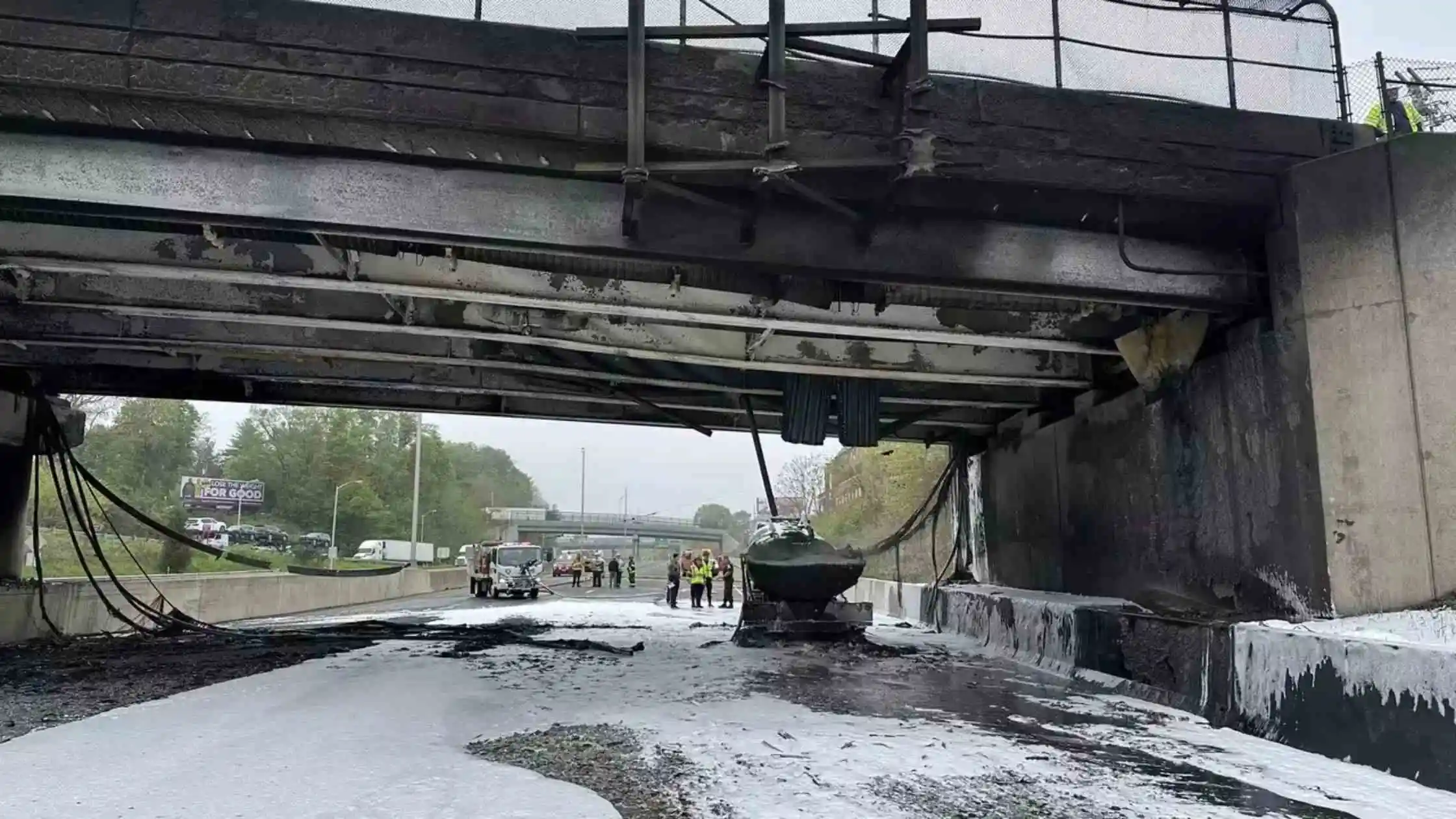The recent tanker fire incident on Interstate 95 in Norwalk, Connecticut, has not only disrupted daily commutes but has also raised significant concerns regarding infrastructure safety and traffic management. As drivers navigate through the aftermath of this incident, it becomes imperative to comprehend the extent of the damage, the implications for commuters, and the measures being taken to alleviate the situation.
Overview of the Incident of Interstate 95
On a seemingly routine Thursday morning, chaos ensued as a fuel tanker crashed underneath the Fairfield Avenue Overpass on the southbound side of I-95 in Norwalk, Connecticut. The ramifications were immediate and severe. The intense blaze, fueled by approximately 9,000 gallons of gasoline, engulfed the area, causing substantial damage to the overpass structure. Structural engineers quickly determined that the overpass was compromised beyond repair, necessitating its demolition.
Causes and Consequences of Interstate 95
The precise sequence of events leading to the tanker fire underscores the vulnerability of transportation infrastructure to unforeseen circumstances. According to officials, the incident was triggered by a car cutting off a tractor-trailer, forcing the gasoline tanker to take evasive action. The subsequent rupture of the tanker’s rear led to the catastrophic release of fuel, which ignited and engulfed the surrounding area. Miraculously, there were no reported injuries, but the financial toll and logistical challenges are significant.
Impact on Commuters and Businesses
The closure of a vital section of Interstate 95, spanning between exits 14 and 15, has disrupted the daily routines of thousands of commuters and businesses reliant on this major thoroughfare. With approximately 160,000 vehicles traversing this route daily, the ripple effects are profound. Alternate routes are inundated with diverted traffic, leading to congestion and delays. Moreover, the closure has prompted the closure of schools and the cancellation of various events, further underscoring the widespread ramifications of the incident.
Response and Mitigation Efforts
In the wake of this crisis, state and local authorities have mobilized resources to mitigate the impact and restore normalcy. Governor Ned Lamont has emphasized the importance of utilizing alternative transportation modes, such as rail services, while urging employers to implement flexible work arrangements. Additionally, concerted efforts are underway to expedite the demolition of the compromised overpass and initiate necessary repairs to restore the affected infrastructure.
Long-Term Implications and Lessons Learned
The I-95 tanker fire incident serves as a poignant reminder of the fragility of transportation infrastructure and the need for proactive measures to enhance resilience. As investigations into the incident continue, it is imperative to glean valuable insights and implement robust safety protocols to prevent similar occurrences in the future. Furthermore, stakeholders must prioritize investments in infrastructure maintenance and modernization to ensure the safety and efficiency of our transportation networks.
Conclusion
The I-95 tanker fire incident in Norwalk, Connecticut, has cast a spotlight on the vulnerabilities inherent in our transportation infrastructure and the resilience of our communities in the face of adversity. While the immediate challenges are formidable, concerted efforts and collaborative initiatives offer hope for a swift recovery. As we navigate through this crisis, let us draw upon the lessons learned to fortify our infrastructure and safeguard the well-being of all stakeholders.








